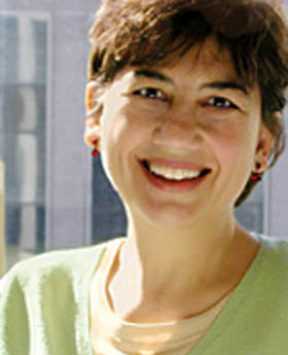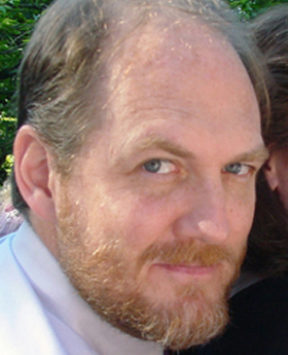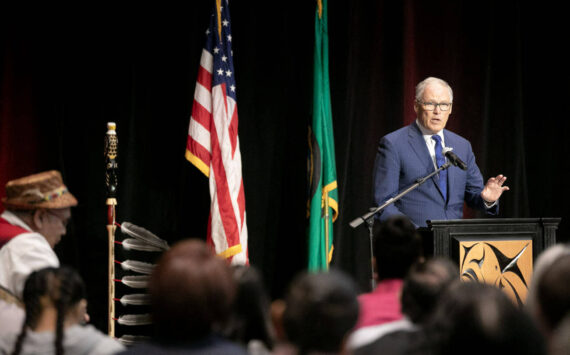Were all feeling cutting edge right now with our broadband Internet connections and what we can do online with high-speed downloads, movies and interactive games.
The reality is that we are only still in the horse-and-buggy era of broadband connectivity.
Joe Mambretti, director of International Center for Advanced Internet Research (iCAIR) at Northwestern University, is researching the Third Generation of the Internet and he took a few moments to tell us about its coming attractions on the Net.
Q: Tell us what areas of the Internet you focus on with your research.
A: We are specialists in next generation networking technologies – large scale projects like international networks, states networks, regional and metropolitan networks.
We dont focus on enterprise networks, telephone or the commodity Internet, in other words, the Internet most people use. Its something we did years ago. We helped develop the first generation Internet, the second generation Internet and now are developing the third generation Internet.
Q: Were you at the university in Chicago when the first generation was developed with its graphical interface?
A: I was. In fact, I remember a meeting at Argonne National Laboratory when a project was described in 1993 called a viewer for high-energy physics data and documents and its project name was Mosaic. It was based on a Web server that was created at CERN in Switzerland by Tim Berners-Lee. Within a few months it had a few million users.
Q: Your research mentions the first generation Internet, the second generation Internet and the third generation Internet. Where are we now?
A: The first generation Internet is a packet routed network. In other words, the information is sliced up in tiny bits, the goods are sent around on whats called the best-effort network. The packets go as best they can and there is no determination of quality.
The second generation Internet is a little more sophisticated in that it has techniques to determine what packets go where and whether they should go to a higher or lesser quality of service. Large enterprises are experiencing the second generation.
Q: So most people are experiencing the first generation of the Internet?
A: Thats correct. The Model T Internet. They are chugging along in their little black car, winding it up every morning.
Q: I dont know how many million Internet users who are still dialing up consider themselves in the horse and buggy days. So what is the third generation of the Internet?
A: There are really two components to it. One is a description of the core technologies and what most people think What will this do for me? The current Internet runs on the old-fashioned telephone infrastructure and old-fashioned copper. People talk about their fast DSL but its not fast. The DSL is just a protocol to allow the Internet to run over copper. We want to get away from all that the old-fashioned architectures, the old-fashioned copper and want to go to fiber.
Q: So what research are you doing at the technical level?
A: We are creating a new type of Internet which has the sophistication to tell where packets are going and how they should go and supplemented by very agile optical core networks.
Were developing new types of optical channels and dynamic provisioning of those optical channels. What this means is that information will flow incredibly much faster this way. You can have enormous amounts of bandwidth.
Q: To use this, the whole infrastructure we have in the world right now will have to be transitioned over to optical fiber to accommodate.
A: The nice thing about the telecom implosion is it was based on the provisioning of fiber. There are hundreds of billions of dollars invested in creating fiber and its all out there to be used today. Only about 4 percent is being used so there is a huge amount of fiber. Thats not to say its an all places that its needed.
Q: Your research talks about something called CAVE and an immersive virtual reality environment. Whats coming down the road with that?
A: This next stage is making all of this 3-D. There is a technology called the Computer Aided Virtual Environment (CAVE), which was created at the Electronic Visualization Lab at the University of Illinois at Chicago. This is a room that you walk into and interact with 3-D objects. You create 3-D virtual worlds that you can step into.
Q: Your report teased us with the word “holodeck.”
A: Oh, yes. Its just like the holodeck on Star Trek. Using a new technology, you can actually get physical feedback. It appears like a hard object.
For example, cars are being designed using this technology and a building was built on the campus of the University of Illinois by architects using this technology.
There are some people in Greece who are bringing ancient cities back to life. One city is being created for the summer Olympics. These are cities you can walk through. Another one is creating 1930s Harlem. You can walk down the streets, you can walk into a café and you can listen to the music.
Q: You still have to wear headgear, right? Youre not in a room that has these visual representations like on Star Trek.
A: Actually, there is no headgear. For the CAVE today, you do wear stereoscopic glasses.
However, there is a technology that is just now being developed that allows users to do 3-D without having to where the glasses. Youre just looking at it with your natural self and it appears 3-D. Remember the image in Star Wars of Princess Leah when she was standing on the table? Well, see thats now a possibility.
Q: When do you see this kind of technology and advanced worlds available for people to experience?
A: You have to go through the cycle of research labs first, then the large government agencies, then the big companies all the way down to the consumer. You can experience this by visiting labs today.
It will be awhile before it gets out there to general consumers. It will probably start appearing, as technology often does, in specialty forums.
Information about the research at the International Center for Advanced Internet Research is available at www.iciar.org. Also visit The Electronic Visualization Lab at the University of Illinois at Chicago at www.evl.uic.edu. For more conversation with Joe Mambretti, the full interview will broadcast Saturday, July 31 at 11 a.m. on KLAY 1180 AM and will be available at WebTalkRadio.com starting July 31.
Dana Greenlee is co-host/producer of the WebTalkGuys Radio Show, a Tacoma-based radio and Webcast show featuring technology news and interviews.






